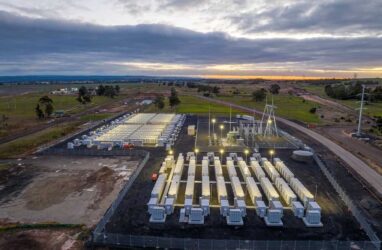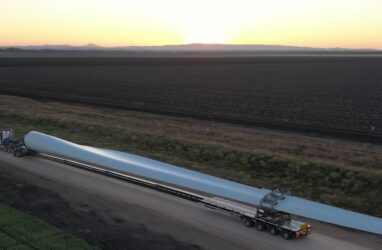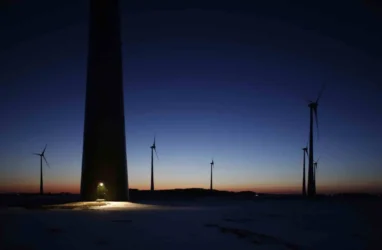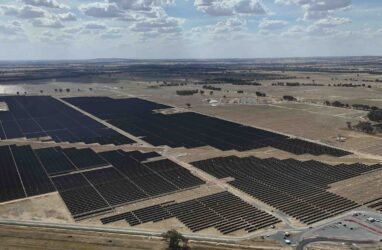Feed aggregator
Christmas Day forecast: calm, dry weather in store for much of Australia
BoM meteorologist says Victoria, Tasmania, South Australia and New South Wales will be generally dry and ‘fingers crossed it stays like this’
- Follow our Australia news live blog for latest updates
- Get our breaking news email, free app or daily news podcast
Christmas Day should be calm and settled across much of Australia – on the weather front, at least – according to the weather bureau’s first look at the festive forecast.
Senior meteorologist Sarah Scully, from the Bureau of Meteorology, said a band of high pressure on Christmas Day would bring generally dry and settled conditions to south-eastern Australia, mild temperatures for west and south-west Western Australia, and typically hot and stormy weather in the north.
Sign up for Guardian Australia’s breaking news email
Sydney – mininum 18C, maximum 28. Cloud clearing. Light winds becoming easterly 15-25km/h during the day.
Melbourne – min 14C, max 28. Mostly sunny. Light winds becoming south to south-easterly 15-20km/h during the day.
Adelaide – min 16C, max 35. Sunny. Winds easterly 15 to 20 km/h tending north-west to north-easterly 15-25 km/h during the morning.
Hobart – min 13C, max 23. Partly cloudy. Slight chance of a shower. Winds westerly 15-20km/h shifting south-easterly during the day.
Canberra – min 9C, max 33. Mostly sunny. Light winds becoming north to north-westerly 15-20km/h during the day.
Darwin – min 26C, max 34. Possible shower or storm.
Brisbane – min 20C, max 29. Light winds becoming east to south-easterly 15-20km/h during the morning.
Perth – min 15C, max 25. Cloud increasing.
Continue reading...EY report estimates surplus NZUs at 22% lower than govt assessment
Study examines women’s proximity to incinerators and chemical level in breast milk
Researchers find winds affecting emissions from incinerators play role, though diet still thought to be largest factor
Toxic chemicals in breast milk have been identified in mothers living near waste incinerators in the UK, a study has found.
The study looked at complex chemicals called polychlorinated biphenyls (PCBs) and dioxins. These are found in the fumes from burning waste and can persist in the environment for a long time. They can also accumulate in the fat in our bodies, with more than 90% coming from food.
Continue reading...Solar swing state: From nearly too much grid demand to warnings of not enough in less than a day
The post Solar swing state: From nearly too much grid demand to warnings of not enough in less than a day appeared first on RenewEconomy.
Zen inks deal with pumped hydro and hyrogen hopeful to help large energy users kick fossil habit
The post Zen inks deal with pumped hydro and hyrogen hopeful to help large energy users kick fossil habit appeared first on RenewEconomy.
Renew Economy is changing our reader comments platform
The post Renew Economy is changing our reader comments platform appeared first on RenewEconomy.
Solar farm and battery emerged from rhombus of regret with bank finance and a construction plan
The post Solar farm and battery emerged from rhombus of regret with bank finance and a construction plan appeared first on RenewEconomy.
UK-based Cubico closes deal with banks for 500MW wind project, its first in Australia
The post UK-based Cubico closes deal with banks for 500MW wind project, its first in Australia appeared first on RenewEconomy.
US DOE estimates LNG exports raising global emissions 0.05% over 30 years
Trouble in Arctic town as polar bears and people face warming world
Could this be what our home on Moon or Mars might look like?
Pollution exposure linked to mental health hospital admissions, says study
Researchers from St Andrews found rise in nitrogen dioxide exposure associated with higher admissions
Exposure to air pollution is linked to an increased risk of hospital admission for mental illness, according to the most comprehensive study of its kind.
The research, involving more than 200,000 people in Scotland, found an increase in exposure to nitrogen dioxide in particular was associated with a higher number of people being admitted to hospital for behaviour disorders and mental illnesses.
Continue reading...Market manipulation suspected as prices soar in “dunkelflaute” and fossil generators sit idle
The post Market manipulation suspected as prices soar in “dunkelflaute” and fossil generators sit idle appeared first on RenewEconomy.
Poland can teach the rest of the bloc how to become a cleantech powerhouse -think tank
The Driven Podcast: EV conversions, and the new models for 2025
The post The Driven Podcast: EV conversions, and the new models for 2025 appeared first on RenewEconomy.
California biochar facility secures approval amid broader forest biomass management goals
Canada weakens final clean electricity regulations
EU states hesitant on ETS2 amid worries about auto sector’s future
Ratings agency integrates safeguards scoring in voluntary carbon project risk assessments
Neoen lands $1.4 billion debt deal for old and new projects, including Australia’s biggest battery
The post Neoen lands $1.4 billion debt deal for old and new projects, including Australia’s biggest battery appeared first on RenewEconomy.











